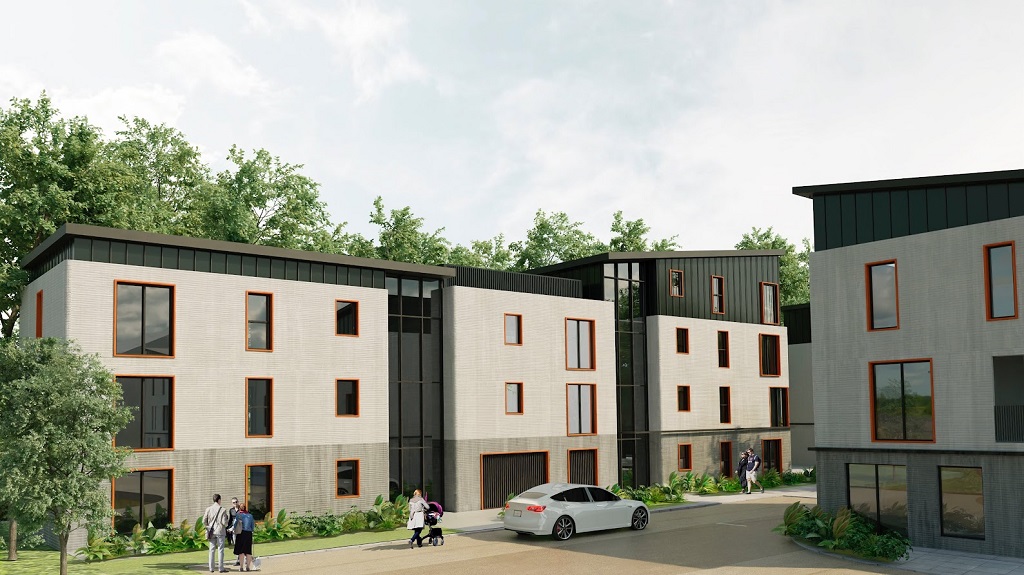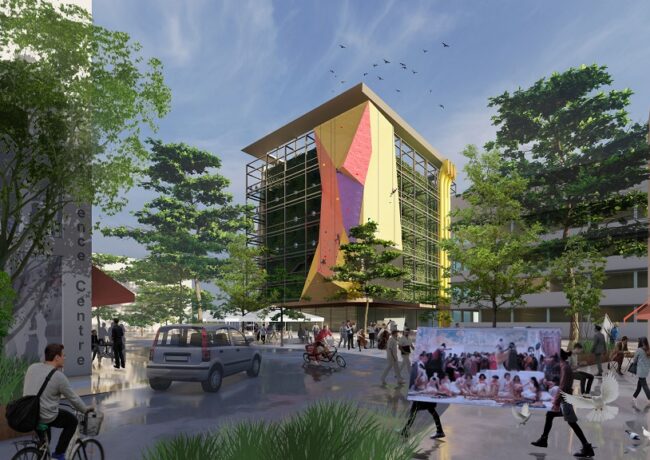3D-printed homes lined up in Accrington
The £6m scheme would be the first of its kind in the country, according to developer Building for Humanity, and would house homeless veterans and low-income families in 46 eco-homes that can each be ‘printed’ in weeks.
BfH, a not-for-profit housing provider looking to improve sustainability and efficiency in the sector, is working with Harcourt Technologies, a provider of 3D Construction Printing technology in the UK and Ireland.
Harcourt’s team, comprising architects, engineers, material scientists and construction technologists, has been developing and testing the technology over the past 18 months in preparation for commercial roll-out.
In addition to the development of 46 eco homes, which will be a mix of one- and two-bedroom apartments and three- and four-bedroom houses, the plans also include a community centre and training hub, as well as private and communal gardens.
The proposed development, at Charter Street, will be the first 3DCP residential project in the UK, and the largest such development in Europe, according to the partners. working this way:
- Reduces labour cost ratio (30% vs 70%)
- Reduces site time by up to 50%
- Reduces comparative waste by 60%
- Projected 25% cost reduction against comparable construction that it replaces
Progress in Accrington follows news in September that the first 3D-printed multistorey home in North America had reached completion.
Scott Moon, founder of Building for Humanity, said: “Our aim is to ensure quality housing is accessible to everyone through our unique affordable housing model. The model is simple, to create a charitable housing institute that is driven by human fulfilment and wellbeing rather than profit.
“All surplus profits go to our chosen charity partner Homes for Humanity, meaning it goes into the community to provide housing, support and training. Ultimately this development is about so much more than housing, it is about people and giving them the opportunity to thrive.”
Plans for the site were originally approved by Hyndburn Council in 2021, with the revised project being signed off in April this year.
Justin Kinsella, CEO of HTL.tech, said: “HTL’s core objective is to develop the use of 3DCP to create less wasteful and more sustainable building solutions which harness the benefits of advanced manufacturing technology to provide affordable, higher quality structures, faster and more reliably and in an environmentally beneficial manner.”
In preparation for the Charter Street Project, HTL has been working at an R&D facility at Accrington & Rossendale College. Working in collaboration with Harcourt Architects and structural engineering firm Lindsay Baxter Design, they have successfully developed the application of the technology to be compliant with UK building regulations.
The college will further support the technology by facilitating a 3DCP introduction course on 21 October.
The Charter Street development is scheduled to be completed within half the time of traditional construction methodologies, the partners said, adding that the community centre and training hub will showcase the free-form capabilities of the technology and serve as a meeting and training hub for residents.

The community hub will be used for a range of purposes. Credit: via Bird Consultancy





How are new-build slums like this acceptable?! Does no developer or architect care about beauty? With our history, this is the best we can offer for future generations? This is obtuse. It is so insulting to our history.
By Richard